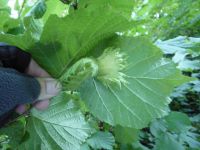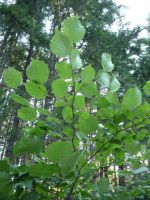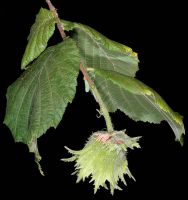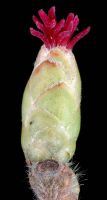Distribution: Occurring west of the Cascades crest in Washington; British Columbia to Oregon, also known from western Idaho.
Habitat: Abandoned plantings, roadsides, waste sites, forest edge.
Flowers: January-April
Origin: Introduced from Europe
Growth Duration: Perennial
Conservation Status: Not of concern
Pollination: Wind
Monoecious, deciduous shrubs to 5 m. tall; bark coppery brown; branches ascending; twigs pubescent, covered with bristly, glandular hairs.
Petioles pubescent, covered with bristly, glandular hairs; leaf blades broadly ovate to broadly elliptic, 5-12 cm. long and 4-12 cm. wide, thin, the base cordate to rounded, the margins coarsely doubly-serrate, the tip abruptly acuminate.
Staminate catkins lateral along branchlets on short shoots, pendant, in clusters of 2-4; stamens 4; pistillate flowers beyond staminate on branchlets, often terminal, in clusters of 2-4, subtended by 2 enlarged bracts, distinct nearly to the base, concealing the flowers except for the red stigmas.
Hard-shelled nut about 1.5 cm. in diameter, nearly enclosed by the bracts
Publication: Sp. Pl. 2: 998. 1753.
PNW Herbaria: Specimen records of Corylus avellana in the Consortium of Pacific Northwest Herbaria database
WA Flora Checklist: Corylus avellana checklist entry
OregonFlora: Corylus avellana information
E-Flora BC: Corylus avellana atlas page
CalPhotos: Corylus avellana photos





































